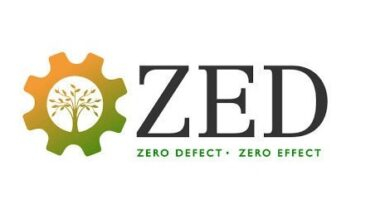Origami Metamaterials
Context:
Scientists have developed a material similar to origami metamaterials that crumple rather than tear to take the impact of any accident, when sandwiched in the fender of a car.
What are Metamaterials?
- Metamaterials are artificial materials that can achieve electromagnetic properties that do not occur naturally, such as the negative index of refraction or electromagnetic cloaking.
- The theoretical properties of metamaterials were first described in the 1960s by Victor Veselago, who focused on the purely theoretical (at the time) concept of negative index materials. His concept became a reality at the turn of the century.
- A metamaterial typically consists of a multitude of unit cells, i.e. multiple individual elements (sometimes referred to as “meta-atoms”) that each has a size much smaller than the wavelength that it interacts with. These unit cells are microscopically built from conventional materials such as metals and dielectrics like plastics.
- However, their exact shape, geometry, size, orientation, and arrangement can macroscopically affect light in an unconventional manner such as creating resonances or unusual values for macroscopic permittivity and permeability.
- Furthermore, because the properties of the metamaterial can be determined from the composition and structure of such small (nanoscale) objects, the electromagnetic properties of the metamaterial such as permittivity and permeability can be accurately tuned on a very small scale.
- Some examples of available metamaterials are negative-index metamaterials, chiral metamaterials, plasmonic metamaterials, photonic metamaterials, etc.
Origami Metamaterials
- Researchers have developed a special class of origami metamaterials which show a constant value of Poisson Ratio when subjected to stress.
- When a material is crushed or stretched along a particular direction, it undergoes a modification in the perpendicular, or lateral, direction.
- The ratio between the deformation along the force and the deformation in a direction lateral to the force is called the Poisson ratio. The Poisson ratio can be positive or negative.
- In order to be useful, materials need to maintain a constant Poisson ratio when they crumble under pressure. However, they are prone not to do so, and the Poisson ratio varies as they deform.
- The benefit is that the observed property does not depend on whether it is made from a sheet of paper, polymer or metal but under impact the sheet folds up along the creases.
What are the Potential Applications of Metamaterials?
- Potential Applications of Metamaterials include optical filtering, medical devices, remote aerospace operations, sensor detectors, solar power management, crowd control, radomes, antenna lenses, and even earthquake protection.
- Lenses made of metamaterials may even enable imaging below the diffraction limit that prevents conventional optical lenses from magnifying any further.
What is Origami
Origami from ori meaning “folding”, and kami meaning “paper” (kami changes to gami due to rendaku)) is the art of paper folding, which is often associated with Japanese culture. In modern usage, the word “origami” is used as an inclusive term for all folding practices, regardless of their culture of origin. The goal is to transform a flat square sheet of paper into a finished sculpture through folding and sculpting techniques. Modern origami practitioners generally discourage the use of cuts, glue, or markings on the paper. Origami folders often use the Japanese word kirigami to refer to designs which use cuts.
The small number of basic origami folds can be combined in a variety of ways to make intricate designs. The best-known origami model is the Japanese paper crane. In general, these designs begin with a square sheet of paper whose sides may be of different colors, prints, or patterns. Traditional Japanese origami, which has been practiced since the Edo period (1603–1867), has often been less strict about these conventions, sometimes cutting the paper or using nonsquare shapes to start with. The principles of origami are also used in stents, packaging, and other engineering applications.
Origami Applications
- Architecture and Civil Engineering: Origami is used in the manufacturing of miniature models of bridges and stadiums.
- Medicine: Paper folding techniques are used to embody the cell membrane and protein, and are used in modeling DNA samples.
- Mechanical Engineering: Origami techniques were used in the pipes of the Japanese high speed trains. In-pipe supports were used to absorb the excess pressure; thus, reducing the risk of accidents.
- Mathematics: Some teachers currently use origami as an educational tool that helps in clarifying geometry, explaining fractions, and solving problems.
- Space technology: There are plans to launch an aircraft made using origami techniques into space. Tests have already been implemented in 2008, but it has not been launched yet.
Origami in Air bags

Bullet Proof Shield

Medical Robots

Space Technology

Application of Origami in Space video
Source: The Hindu
You can find many articles on SCIENCE AND TECHNOLOGY (part of GS III) in our website. Go through these articles share with your friends and post your views in comment section.



